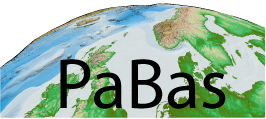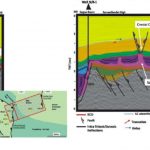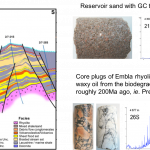
Uncategorized
Background
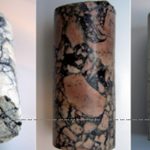
Oils are known to have been generated by pre-Jurassic source rocks on the British Continental Shelf (e.g. British Geological Survey 2016, Peters et. al. 1989). The large variation in oil composition in different compartments of the J-Block discussed by Lines and Auld, 2004, may as well reflect contribution from source rocks of various ages. On the Norwegian part of the North Sea Paleozoic generated oils are described from the Embla Field (Pedersen et al., 2006; Ohm et al., 2012; Abay et al., 201...
Read More
The application deadline has expired.
Expect to have a PhD student ready by the end of this year.
More information will be available soon.
Read More
The PaBas project are currently seeking PhD students.
The application deadline is October 17th.
Read More
Pabas has three industry commitments to join the project
Paleozoic intervals are still under-explored in the Norwegian sector of the North Sea
Petroleum potential
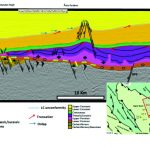
E-W interpreted seismic line showing the main Paleozoic petroleum system proposed for the southern North Sea, Sørvestlandet High area (Doudouh, 2017)
Source Rock and Migration in the Sørvestlandet area
The Mesozoic formations that are the main source rocks in the Central Graben (Mandal, Haugesund and Farsund Formations) (Glennie, 2009) are mostly immature in the Mandal High, Sørvestlandet High area. The Jurassic source rocks in the Søgne Basin are too shallow to have generated and expell...
Read More
Evidences and indications of mature Paleozoic source rocks in the North Sea

Devonian
Only a few wells have drilled into the Devonian on the NOCS. The source rock quality measured on shales from the Embla Field show these at best to be Type III, gas prone source rocks (Pedersen et al. 2006). Lacustrine sediments with oil-prone source rock quality where deposited in Devonian time in the Orchadian Basin (Duncan and Buxton, 1995; Marchall and Hewett, 2003). The Devonian sourced, solid bitumen seen in the wells on Embla (see figure below) may have been sourced from these la...
Read More
Objective
The main goal of this project is to improve the understanding of the Paleozoic petroleum system in the southern North Sea Paleozoic sub-basins following the work of Ohm et al. (2012) and Doudouh (2017). For such a purpose, we aim for a 4-year project that includes at least one PhD student to study the tectonic-stratigraphic evolution of the Paleozoic sub-basins based on seismic data and evaluate the potential of possible Paleozoic source rocks by doing detailed geochemical analysis. The estimate...
Read More
Background
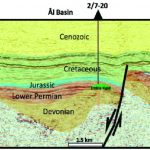
Despite showing a great success in the UK and Dutch sector, the Paleozoic intervals are still underexplored in the Norwegian sector of the North Sea, see figure A and B below. Some of the biggest discoveries in the UK sector is within in the Devonian sandstones and lacustrine sediments, while for the Dutch and southern North Sea the Carboniferous play model has proven successful.
Figure (A) shows the distribution of known Devonian rocks in the North Sea (Marshall and Hewett, 2003). Red rectan...
Read More
